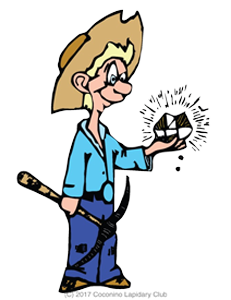This is the first of two Blogs on native silver. In the first I will introduce the mineral, including a gallery of specimens, and in the following blog, “Ancient Silver Jewelry” I’ll present examples of ancient silver jewelry, coinage, and art works, which demonstrate the innovative artisanship of early silversmiths from varied locations around the world.
Among the native elements, silver, [Ref 1], is a favorite among mineral collectors, as it is for me. Silver offers variations in color from metallic silver-white to the optical interference colors of a thin coating film, (such as on copper sulfide minerals – see my earlier Copper Blog), to the sooty black of a thick coating. From locations around the world it occurs in a number of aesthetic and geometrically interesting forms, ranging from groupings of single crystals (Figures 1-2), spectacular fern-like dendritic arrays of crystals (Figures 3 & 4), and striking wire and sheet forms (Figure 5 & 6). The relative arrangement of crystals in, and the shape of, the dendrites has been found to depend on the conditions of the surrounding silver-bearing solution during deposition of the silver, [Ref 2]. Specimens of wires attached to the silver sulfide acanthite, (Ag2S), grow on oxidation of the sulfide mineral, which liberates the silver, as described below, both by roasting, [Ref 3], or by chemical reactions in solutions within both the oxidized and replacement zones of an ore body, (Slide 9 of [Ref 4]). The wires grow at the interface between the acanthite and silver by continuing the face centered cubic lattice shared by both the acanthite and the silver, [Ref 1]. The sulfur of the acanthite occupies the interstices between the silver atoms. X-Ray diffraction and microscopy have demonstrated the crystallinity of a native silver wire.
In order to share with you these beautiful and intriguing forms of native silver, I’ve included a comprehensive gallery of these forms from around the world, (Figures 3-17). I’ve also taken the liberty of including a favorite specimen from my silver collection in the gallery, (Figure 10).
Because the lore of lost precious metal mines, particularly those in Arizona, New Mexico, and Nevada fascinate many of us; I’ll begin referencing descriptions and histories of these mines and provide brief excerpts from the references. In this blog, the emphasis will be on lost silver mines and in future blogs on silver minerals. Future blogs on Gold and Gold minerals will also include lore & history of lost Gold mines.
Silver Crystal Forms
Silver belongs to the isometric crystal system, [Ref 1], and crystallizes in cubic and octahedral forms as shown in Figures 1 and 2. The forms reflect the symmetry of the isometric crystal system. Silver crystals form twins on the octahedral surfaces of two crystals resulting in a Spinel-Twin, [Ref 6], with the remainders of each of the octahedrons visible, as seen in Figure 3.



GALLERY OF NATIVE SILVER SPECIMENS












LOST SILVER MINES
The location of the Lost Duppa Silver Mine in Arizona, [Ref 8], lies in the numerous mines and ore deposits of the heavily mineralized Bradshaw Mountains, (Figures 11-16). When discovered, the deposit was a ledge of silver-bearing quartz located in one of the many steep canyons located on the east side, of the northern Bradshaw Mountains. The ore was native silver. After his initial find, Duppa failed to relocate his original path to the deposit and never found it again.


The Lost Silver Lode of Carbonate Creek, New Mexico, [Ref 11]
The discovery of lode was in the Kingston Mining District, located in the southern region of the Black Range in Southwestern New Mexico. Located within the range are the Chloride, Kingston, and Hermosa Silver Distracts which have been rich producers of the metal. The lost lode lies in the Kingston Silver Mining District shown in [Ref 12], which eventually produced silver amounting to over Six Million in USD. The lost lode was discovered along Carbonate Creek near the town of Kingston as surface float of acanthite (silver sulfide). The weights of pieces of the float ranged up to 250 pounds. Ultimately float yielding over 80,000 ounces was found, but the source of the float was never discovered.
